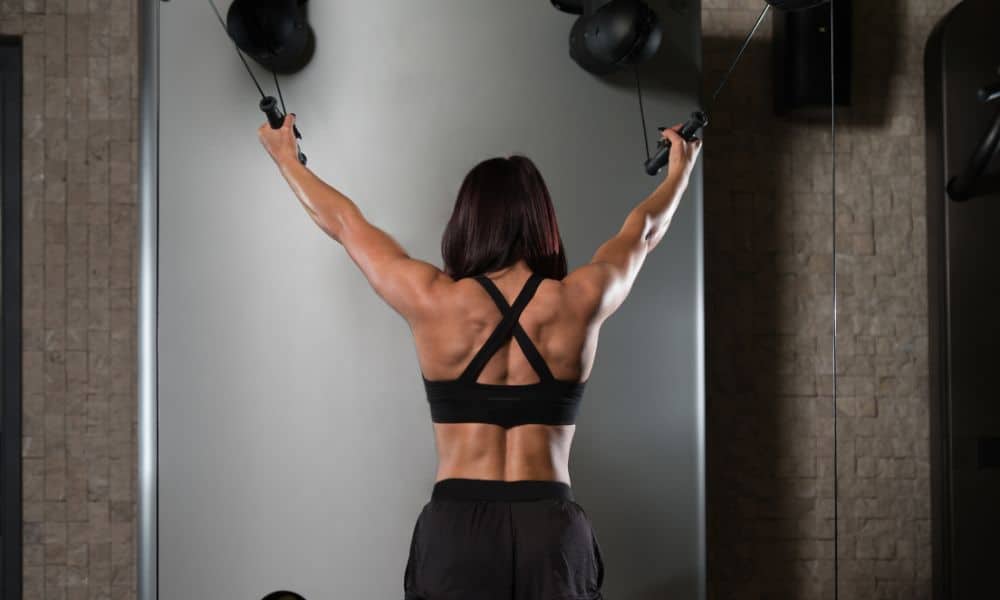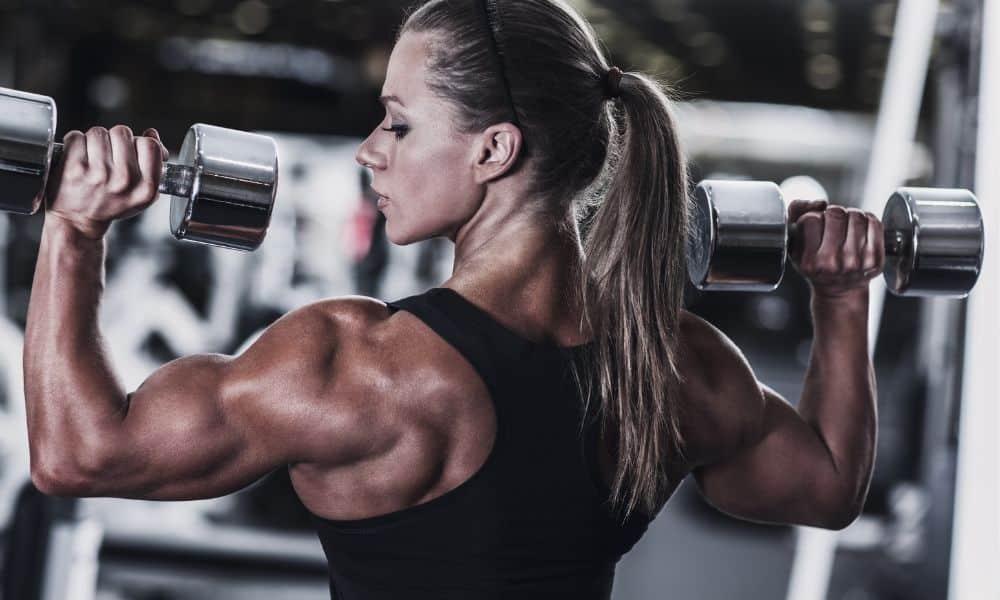How do you get the best results from your back and bicep workouts? Time to take care of those back and bicep muscles. Working out your back and biceps is essential for a healthy fitness routine. To get the most from any workout, you must understand the mechanics of the muscle you want to improve.
It can help build muscle, improve posture, and even reduce the risk for chronic conditions like heart disease! This article will show you how to get the most out of your workout with some simple exercises that will give you significant results in no time. Let’s begin!

The primary muscles involved in back muscle training and biceps include:
Back
- Latissimus Dorsey (aka, “Lots” ): These are large sheets of muscle that spread to the sides of your back and allow you to stretch your arms back and forth
- Terrace Major: A small muscle under the shoulder that helps pulls your arms back and forth.
- Rhomboids: Upper lumbar muscles that raise, lower, and rotate the shoulder blades.
- Medium and lower trapezius (“traps” ): These people pull back and press the shoulder blade
Biceps
- Biceps brachii: Your primary biceps muscle twists the wrist outwards and gives flexibility to the
- The brachialis is on the outside of your arm between your biceps and triceps. It softens the elbow.
The Best Back and Biceps Workout
You can divide back and biceps workouts into different categories. For example, there are three types of lumbar exercises and five biceps exercises.
Back workouts that directly train the muscle:
Horizontal Stretch (Rows):
Understand how the previous exercise categories work, and stretch your body upright. Then, if you pull something towards your mid-section, move it with the horizontal plane. Any exercise with this aircraft is a row – whether it’s a sitting cable row, face-pulling, one arm, or dumbbell row.
You can even change the position of your torso to perform these exercises. For example: bending your hips at an angle. Thus, your torso is parallel to the floor (as in a bent barbell row).
However, you still pull towards your body with this angle as if you were standing. Therefore, classify any move that requires you to pull toward your body as a horizontal bridge. Horizontal pulls help you create the best back and bicep workouts.
Queues should make up the bulk of your training volume. When lining up with dumbbells, you can turn round the arms to get a rotating position on the bridge (thumbs pointing at you). You don’t do that with pull-downs and pull-ups. With them, the shoulder has to rotate internally, and we are already doing a lot of work in our daily lives through driving, texting, and typing. We should try to get our training out of it, so we recommend more volume than the vertical on the horizontal plus.
Target Muscles: Rows effectively train all major muscles – lumbar, terrace major, rhomboids, and trapezius. The latter two make for the development of a thick, fleshy waist.
Exercise variants: barbell bent row, one-arm dumbbell row, bodyweight row (with suspension trainer or power rack or barbell mounted in Smith machine), sitting cable short row, T bar-row, mine row, Meadows row, trap barrow, chest-supported row, machine row (plate-filled, selected, smith machine), Pendle row.
Vertical stretch (pull-ups/chin-ups, lat pull-down):
Drawing vertically is a little easier than drawing horizontally. Movements by which you pull yourself up following a straight line or pull-down are vertical stretching exercises and variations of pull-ups and lat pull-downs. Vertical stretch compliments the horizontal stretch and helps you create the best back and bicep workouts. The two work together to dissect how you can build muscles correctly.
Target Muscles: Lat pull-downs and pull-ups highlight the upper lats and teres major, adding width to the upper back.
Exercise Variations: Wide Grip Lat Pull Down, Neutral Grip Lat Pull Down, Reverse Grip Lat Pull Down, Wide Grip Pull Up, Neutral Grip Pull Up, Chain Up, Assisted Pull Up or Chain Up by using a machine or bands.
Bicep workouts that directly train the muscle:
Curls
The elbow is a simple hinge joint. Therefore, only one movement you can do directly for biceps training. However, you can handle curls with both hands and shoulder positions to target the biceps (and the surrounding supporting muscles) in unique ways. Therefore, there are five types of curls.
Supinated-grip curls (standard curls)
in a typical barbell, dumbbell, or machine curl, the forehead and arms are supine, with the palms facing down.
Target muscles: Supernatural curls place a load on the biceps brachii (the central muscle of the arm when you bend your elbow).
Exercise variations: barbell curl, dumbbell curl (standing or sitting), cable curl (bar attached).
Neutral grip curls (hammer curls)
Bend your wrists so that your palms face your body to do a hammer curl (or some change).
Target muscle: The brachialis muscle, below the biceps brachii, becomes more involved in the movement, such as the brachial radialis, the fleshy muscle that runs along with the thumb of your upper arm. However, biceps are still prime movers.
Exercise variations: dumbbell hammer curl, cable hammer curl (rope attached), neutral bar hammer curl, cross-body hammer curl.
Reverse Curl
Unlike a supernatural grip, the pronounced curl flips your grip. Thus, the palms are downward, and the floor at the top of the elevator at the bottom.
Target Muscles: Provided / reverse curls hit the brachialis and brachioradialis more than spinal and neutral grips curls.
Exercise variants: barbell reverse curl, dumbbell reverse curl, cable reverse curl, preacher reverse curl (dumbbell, barbell, or cable version).
Shoulder twist (preacher curls)
When the preacher curls using a bench, the upper arms are closed in a slight shoulder bend position. Place your elbows in front of your body. Many say that you must include the preacher curl in the best back and bicep workouts.
Target Muscles: The flexible shoulder position helps you better isolate the biceps and helps build a solid connection to the cerebral muscles (perhaps because you can see when you train your biceps).
Exercise variations: barbell / EZ bar preacher curl, dumbbell preacher curl, machine preacher curl, cable preacher curl.
Shoulder extension (inclined curls)
Unlike the preacher curl, you can move more on the biceps by placing the upper arm behind the torso (shoulder extension) during the curling movement. The most common way is to lie on a sloping bench. Ensure that the upper arm is standing on the floor during the entire movement.
Target muscles: While performing a curl, stretch the biceps with a little more stress on the long head of the biceps, the outermost part of the muscle that gives you the top of the muscle when you flex.
Exercise variations: inclined dumbbell curl, inclined cable curl, cable curl behind one arm.
The last word on back and bicep workouts for bodybuilding
They say knowledge is power. Identifying the best exercises to keep you motivated and improving can help you reach your goals faster. Back and bicep workouts are a great way to tone those stubborn muscles that don’t want to change. The back is one of the most important muscle groups for good posture, so it should be trained regularly as part of your workout routine.
And just because you have an office job doesn’t mean you can skip out on arm training! Biceps help with many tasks, from lifting objects off the ground or opening jars to reaching top shelves or opening heavy doors.
You need muscular arms if you plan on being productive at work all day long. What was your experience with these exercises? Have they helped strengthen any other areas in your body like core strength, balance, and flexibility? Let us know in the comments.




